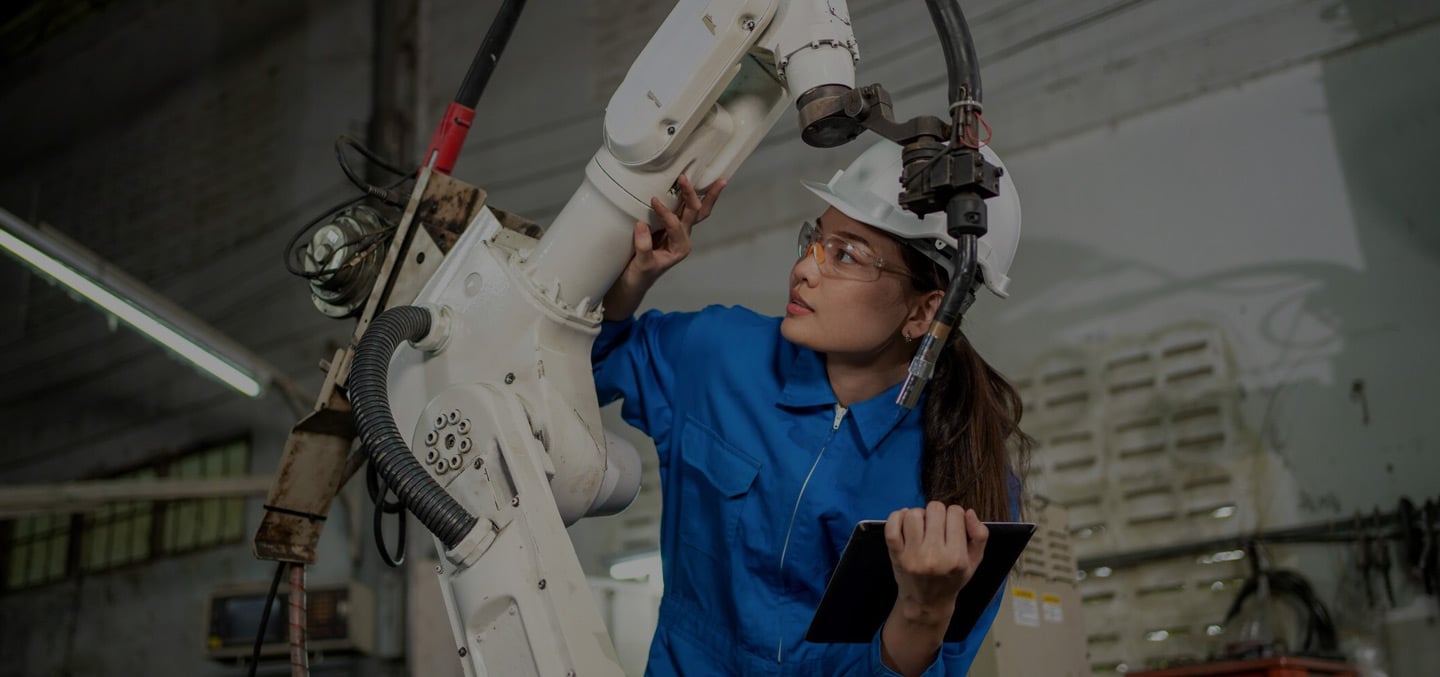Be a Blog Subscriber
Join thousands of manufacturing leaders and professionals who get the Accelerate blog delivered straight to their inbox

In today's rapidly advancing manufacturing landscape, robots have become indispensable tools for enhancing productivity, precision, and efficiency. As automation continues to evolve, ensuring that robots remain in peak operational condition is critical for minimizing downtime and maximizing their performance. Proper maintenance and timely troubleshooting are necessary for reducing breakdowns and prolonging the lifespan of robotic systems. Let’s explore key aspects of robotics maintenance and offer practical tips on how to troubleshoot common issues, helping you keep your systems running smoothly.
Regular maintenance is a cornerstone of robotic system management. Just like any piece of machinery, robots are prone to wear and tear, which, if left unchecked, can lead to unexpected breakdowns. By addressing potential issues before they escalate, you can avoid costly repairs, reduce production halts, and ensure your operations remain uninterrupted.
The benefits of consistent maintenance include:
The importance of maintenance cannot be overstated—neglecting it can lead to reduced performance, expensive downtime, and even accidents.
When it comes to robotic maintenance, several key tasks should be prioritized to keep systems in good working order. Below are some essential maintenance steps to ensure optimal performance.
1. Regular Inspections
Routine inspections are critical for identifying early signs of wear, damage, or abnormalities. Checking for loose parts, unusual noises, or vibrations can help catch issues before they cause significant problems.
2. Cleaning and Lubrication
Dirt, dust, and debris can accumulate on robotic components, potentially leading to malfunctions. Regular cleaning prevents this buildup, while proper lubrication reduces friction and prevents premature wear on moving parts.
3. Battery Maintenance
Many robots rely on batteries for power, and their performance can degrade over time. Regular checks and replacements of batteries ensure a consistent energy supply and prevent unexpected shutdowns during operation.
4. Software Updates
Just as important as mechanical maintenance, software updates are essential for keeping your robot up to date. These updates can improve functionality, fix bugs, and address security vulnerabilities. Staying on top of the latest software revisions ensures your robot runs smoothly and securely.
5. Safety Checks
Robotic systems often operate in environments where safety is paramount. Regularly inspect safety features, such as emergency stop buttons, light curtains, and safety fencing, to ensure they are functioning properly. Faulty safety mechanisms can pose significant risks to operators and equipment.
Even with a solid maintenance routine in place, robotic systems may occasionally encounter issues. Knowing how to troubleshoot common problems can save time and prevent prolonged disruptions.
1. Sensor Malfunctions
Sensors are vital for a robot's accurate operation, as they provide the system with critical environmental feedback. If a sensor is malfunctioning, the robot may make incorrect decisions or movements. Regular calibration and cleaning of sensors can help avoid such issues, but if a problem arises, a reset or replacement may be necessary.
2. Programming Errors
Programming errors can lead to unexpected robotic behavior, including movements that are inaccurate or unsafe. Verifying and debugging the code, along with ensuring the robot's settings align with its tasks, can resolve many software-related problems.
3. Mechanical Problems
Robots rely on numerous mechanical components like joints, gears, and actuators. Over time, these parts can experience wear or stiffness, impacting the robot's movements. Common mechanical issues include joint stiffness and gear wear, both of which can often be addressed through lubrication, part replacements, or recalibration.
4. Power Supply Problems
A robot's power supply is a frequent culprit when troubleshooting performance issues. If the robot is intermittently shutting down or failing to operate as expected, it’s worth checking the power supply connections and ensuring that the voltage levels are stable. Faulty wiring or power surges may require further attention.
Maintaining a robot involves more than just reactive troubleshooting. Adopting a proactive approach to care can significantly reduce the occurrence of malfunctions and downtime. Here are some best practices to follow:
Every robotic system operates under different conditions, so it’s important to account for environmental and operational factors when maintaining and troubleshooting robots. Here are some additional considerations to keep in mind:
Incorporating a robust maintenance and troubleshooting strategy is essential for ensuring the reliability, efficiency, and longevity of robotic systems. By performing regular inspections, addressing common issues promptly, and following best practices, you can keep your robots functioning at peak performance. Whether you’re managing a single robotic arm or an entire automated production line, proper care is the key to unlocking the full potential of robotics in your operations. With these insights, you’ll be well-equipped to maintain your robots and ensure smooth, efficient production processes.
For a deeper dive into robotics maintenance and troubleshooting, tune in to the webinar.
Interested in advancing your skills in robotics for manufacturing? Fill out the form below and let's take the next step together.
Join thousands of manufacturing leaders and professionals who get the Accelerate blog delivered straight to their inbox